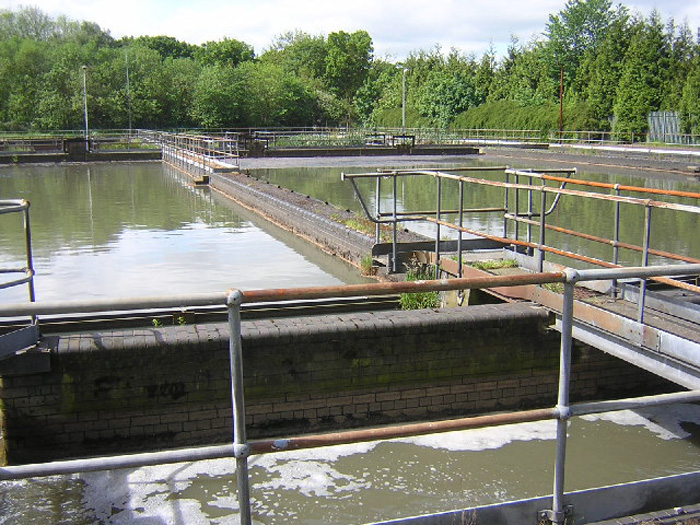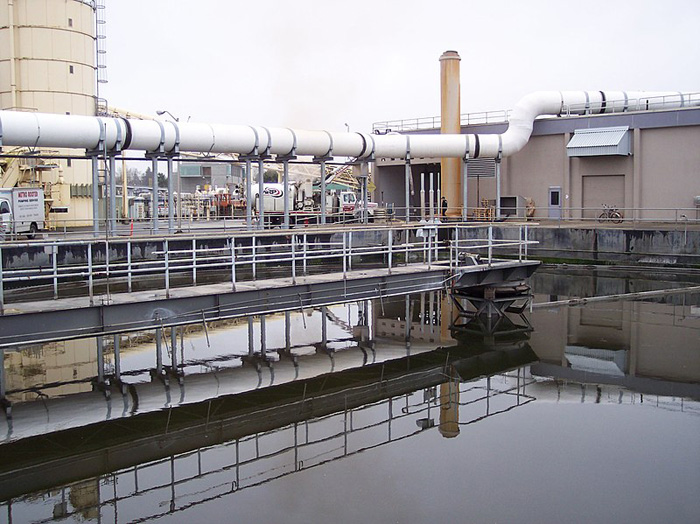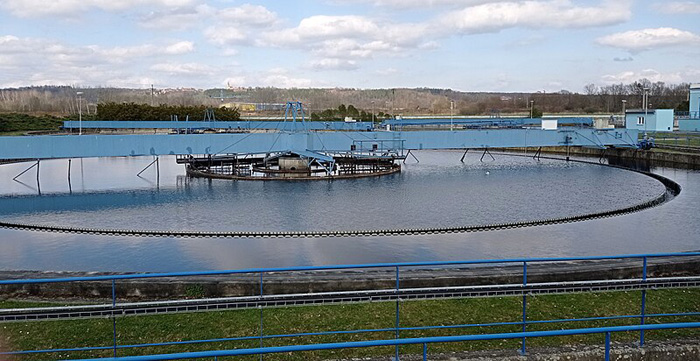
An effluent treatment plant safely treats industrial effluent and other types of wastewater, allowing for either reuse or environmental discharge. The treatment procedure aims to ensure that the effluent is clean enough to meet regulations. It helps to remove pathogens, inorganic substances, organic matter, and heavy metals.
Components of an effluent treatment plant
What makes up an effluent treatment plant varies from one industry to another, as can the effluent’s composition and the target water quality. An effluent treatment plant typically consists of the following:
- Preliminary Treatment
- Eliminating grease and oil
Floating or skimming techniques typically extract grease and oil from wastewater.
- Grit Chamber
It gets rid of abrasive and clogging-causing heavy particles like gravel, sand, and more.
- Screening
Gets rid of big objects like plastics, sticks, rags, and more.
- Primary Treatment
- Equalization Tank
The system maintains a constant treatment rate by balancing the incoming wastewater’s flow and load variations.
- Primary Clarifier
Allows gravity to settle suspended particles. Emptying sludge, or settled solids, from the bottom allows the purified water to proceed to the next step.
- Secondary Treatment
- Biological Treatment
It makes use of microbes to break down organic contaminants. Here are some common methods:
- Biologically aerated filters: Combines filtration and biological treatment.
- Trickling Filters: Effluent is treated by distributing wastewater over a bed of media where microbes grow.
- Activated Sludge Process: To promote microbe growth, some tanks introduce oxygen or air into wastewater.
Secondary Clarifier
The treated water separates the biological solids. Once the biomass settles, it is either removed as waste sludge or recycled as activated sludge.
- Tertiary Treatment
- Disinfection
The process eliminates or renders any residual pathogens inactive. Some common techniques are ozonation, ultraviolet radiation, and chlorination.
- Filtration
Any remaining suspended particles are removed using membrane, multimedia, and sand filters.
- Advanced Treatment
Different procedures for different types of pollutants, like:
- Chemical Precipitation: It gets rid of inorganic substances and heavy metals.
- Ion Exchange: Extracts ions from solutions.
- Activated carbon adsorption: Gets rid of organic substances.
- Treatment and disposal of sludge
- Thickening
It uses flotation or gravity thickeners to concentrate sludge and reduce volume.
- Digestion
Anaerobic digestion typically breaks down organic matter to stabilize sludge.
- Dewatering
It uses drying beds, belt filter presses, or centrifuges to decrease the sludge’s water content.
- Disposal
Regulations allow for the use of treated sludge as fertilizer, incineration, or landfill disposal.
- Auxiliary Components
- Piping and pumps
These are crucial for moving sludge and wastewater between treatment processes.
- Flow monitoring and measurement equipment
Check that everything is running well and that discharge regulations are followed.
Each part of the effluent treatment process works together to produce treated water that meets discharge or reuse regulations.
Types of effluent treatment plants
Effluent treatment plants can treat industrial wastewater to either reuse it or meet discharge limits. Many different kinds of these plants are available, each tailored to a certain industry, contaminant type, and treatment level need. An effluent treatment plant often falls into one of the following categories:

- Biological Treatment Plants
Biological processes use microbes to break down organic contaminants. They may include:
- Aerobic Treatment
It enables microbes to decompose organic matter with oxygen. Aerobic lagoons, trickling filters, and activated sludge processes are a few common methods.
- Anaerobic Treatment
It breaks down organic materials without oxygen, resulting in the production of biogas. Upflow anaerobic sludge blanket (UASB) reactors and anaerobic digesters are two methods.
- Membrane Treatment Plants
Semi-permeable membranes are used to isolate water from contaminants. Some examples are:
- Nanofiltration
It is similar to reverse osmosis, but it is able to remove smaller ions and molecules due to its somewhat larger pore sizes.
- Ultrafiltration
The device filters out particles by size using a membrane.
- Reverse Osmosis
The device pumps water through a membrane while removing impurities using pressure.
- Physical treatment plants
Physical techniques are used to purge wastewater from solids and other particles. Approaches comprise:
- Flotation
The system pumps air up into it to lift any particles in the air and dispose of them.
- Filtration
Filters the wastewater to remove particulates.
- Sedimentation
It lets particles in suspension fall to the ground due to gravity.
- Combined Treatment Plants
These plants use a combination of the approaches mentioned above to obtain the needed effluent quality. The industry frequently alters them to meet specific requirements.
- Chemical Treatment Plants
These plants employ chemical procedures to clean up industrial effluents. Here are some common methods:
- Oxidation
Chemicals like ozone or chlorine oxidize organic and inorganic contaminants.
- Neutralization
To neutralize the effluent’s pH, bases or acids are applied.
- Coagulation and flocculation
The addition of chemicals destabilizes the particles in suspension. They cause them to aggregate into bigger clusters, making their removal simpler.
- Tertiary Treatment Plants
Tertiary treatment, which employs modern techniques, further purifies wastewater after primary and secondary treatment. Approaches comprise:
- Nutrient Removal
There are efforts to control eutrophication by removing phosphorous and nitrogen.
- Disinfection
It eliminates harmful microbes through the use of ozone, chlorine, or ultraviolet light.
- Advanced oxidation processes
Hydrogen peroxide, or ozone, helps break down organic contaminants.
- Constructed Wetlands
These wastewater treatment systems are man-made and designed to look and function like natural wetlands. To filter and break down contaminants, they rely on microbes, soil, and vegetation.
- Zero-Liquid Discharge Plants
With a ZLD system, the goal is to get rid of any liquid waste that leaves the facility. Methods encompass:
- Crystallization
Additional steps are taken to extract salts and other materials from the concentrated brine that results from evaporation.
- Evaporation
It evaporates water using heat, leaving behind solid residues.
- Industry-Specific Effluent Treatment Plants
Specialized treatment plants are necessary due to the fact that various industries produce wastewater with distinct characteristics. For instance:
- Food and Beverage Industries
The biological approach removes nutrients and treats organic pollutants.
- Pharmaceutical Industry
It removes complex organic compounds, but only after extensive chemical and biological treatments.
- Textile Industry
Advanced oxidation techniques and dye removal are often necessary.
Engineers specifically design an effluent treatment plant to handle various contaminants and adhere to legal standards. This guarantees that the water is safe for either reuse or discharge.
The importance of effluent treatment plants
An effluent treatment plant is important to keep the population safe, the environment healthy, and in line with regulations. Here are some significant reasons to underscore its importance:
Regulatory Compliance
Environmental agencies and governments heavily regulate municipal and industrial wastewater discharge. An effluent treatment plant ensures compliance with all statutory standards before releasing effluents into the environment. Compliance allows organizations to stay out of hot water and out of legal trouble.
Climate Change Mitigation
Effluent treatment plants help minimize the impact of climate change by regulating the emission of gases that hasten the planet’s warming. Without treatment, untreated sewage would normally release methane and other greenhouse gases.
Economic Advantages
Effective wastewater treatment can yield substantial monetary gains. Businesses can save money by reusing water, avoid penalties and fines for not complying, and boost their reputation by showing they care about the environment.

Human Health
Pathogens, hazardous chemicals, and other contaminants in untreated effluents can be devastating to human health. Effluent treatment plants protect the public’s health by treating wastewater. This, in turn, helps to limit the spread of diseases and the likelihood of exposure to dangerous substances.
Sustainable Water Management
Because water is a limited resource, it must be managed sustainably so that it can be enjoyed by generations to come. An effluent treatment plant can reduce water use by preparing wastewater for reuse in industrial and agricultural processes and, in certain instances, drinkable water.
Community Health
By keeping local water supplies clean and reducing pollution, an effluent treatment plant improves communities’ quality of life. As a result, locals enjoy a higher standard of living, and the area becomes healthier and more environmentally friendly.
Industrial Efficiency
Effluent treatment that is both effective and efficient can help industrial facilities run more smoothly. Good waste management can optimize industrial processes, reduce waste, and enhance overall productivity.
Environmental Protection
An effluent treatment plant plays a crucial role in preventing the contamination of oceans, lakes, and rivers. It eliminates toxic substances from wastewater, thereby promoting ecological balance and biodiversity.
Decrease in Greenhouse Emissions
Using effluent treatment plants can reduce the environmental impact of municipal and industrial activities. This includes reducing the overall impact on ecosystems, reducing greenhouse gas emissions from unprocessed waste, and lowering water pollution levels.
Recovery of Resources
The ability to extract useful materials from wastewater is a feature of modern effluent treatment facilities. Extracting nutrients, biogas, and other reusable resources is part of this process. It also helps create a circular economy by repurposing waste.
Challenges and Considerations
- Technological Adaptation
Regulatory criteria are always changing, and an effluent treatment plant needs to be able to adjust to different types of effluent.
- Sludge Management
Sludge, a byproduct of treatment, requires either additional treatment or proper disposal.
- Costs of Operations
Infrastructure, maintenance, and trained staff are major expenses for effluent treatment plants.
- Sustainability
Water reuse and energy recovery are two sustainable strategies that can improve an effluent treatment plant’s efficiency and environmental performance.
Conclusion
An effluent treatment plant is crucial for environmentally responsible industrial practices, preserving water supplies, and meeting regulatory requirements. Its wastewater treatment efforts result in cleaner ecosystems, more efficient resource use, and better public health.
